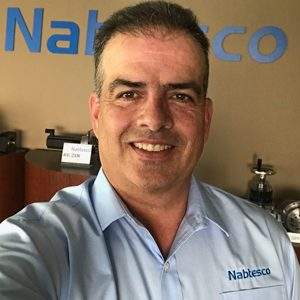Flexibility, coalescing markets, and why millennials might just constitute engineering’s greatest generation.
Editor’s Note: this story is part of an ongoing series of blog entries in which Motion Solutions partners discuss opportunities and challenges facing the automation industry.
Q: What are some of the most important, emerging technologies in your industry?
Jason Lazar: OEMs are asking for smaller, stronger, more diverse units for a lot of different industries and it’s really presented a big hurdle to almost all of the motion control providers globally. Take a look at robotics, for example. Robots now are smaller and more powerful than they used to be. Creating a small design for robotic or load applications is difficult. There are physical limitations on steel and the ancillary components that get involved, so there’s a lot of research underway in a lot of companies trying to come up with smaller more powerful solutions. We’ve invested about $20 million in creating smaller, more powerful gearboxes for major industries, for example.
Q: What do you think are some of the biggest challenges in motion control today, and how is your company addressing them?
JL: Flexibility is really first and foremost the biggest challenge. Thinking fast, being flexible, and making the job easier for OEMs is important because a lot of engineers, older and younger, don’t have the time and effort to put into developing new solutions. There’s such a short timeline from when the customer decides what they need and when they want to get their product to market. As manufacturers, we need to use our core technology to develop products quicker and more efficiently to support our customers.
Q: What industry trends are you seeing that are likely to have the biggest impact on your business?
JL: Everybody is concerned about the millennial generation. What we’re starting to see is all of these millennials have come up with better ways and quicker ways to do things, maybe because they don’t have the tunnel vision. Millennials are thinking outside of the box.
Q: What do you see as high-growth industries right now?
JL: : This is a difficult question. We’re really having a hard time classifying some of these applications. We have surgical robots that are collaborative. Are they surgical robots or collaborative robots? We have surgical robots that move around on their own, so do I classify them as surgical robots or as AGVs? Collaborative robots are not typically labeled as industrial robots. AGVs are technically not industrial robots. All of these industries are really merging together and it’s exploding.

The largest growth I am seeing is because of safety, because of environmental concerns at the end of the day. A lot of companies are getting away from hydraulics, for example. Surgical robots are making surgery easier, more efficient, and also safer.
There are a lot of dissimilar technologies really being used to make tasks easier, quicker, and better. The most exciting thing about it though is that it’s not out of greed. It’s honestly to better our lifestyles or better humanity. It really falls back into my earlier comment about millennials. It’s their generation coming up with all of these ideas and this group of engineers is going to be one of the most powerful ever. I don’t think people truly understand that.
Q: Regarding the industry/technology, what keeps you up at night?
EK: I’ve been in manufacturing for 31 years now. Knowing what’s coming next and problem solving is what keeps me up at night every night, but in a good way. I will get up in the night and start thinking and doing things because it is exciting to me. I’m always asking myself what would be a better way to perform a task.

Jason Lazar is general manager of Nabtesco Motion Control.




